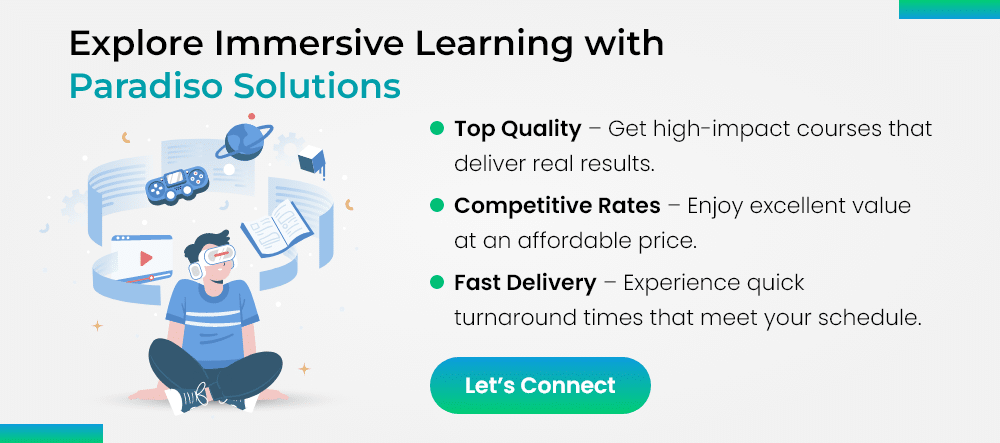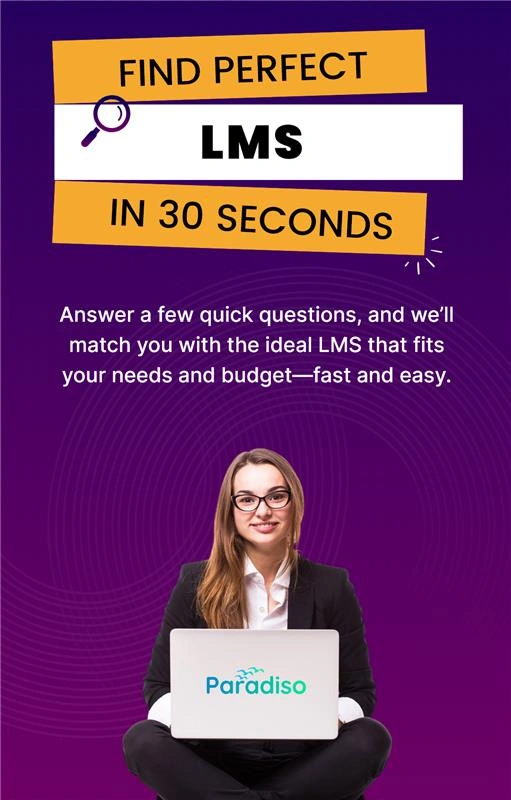In an age where technology has been rewriting the governance of every aspect of our lives, immersive learning technologies are at the crux of this sea change. A medical student rehearsing for a complicated surgical process in a virtual operating room before engaging in real surgery or an engineer visualizing a 3D model of a complex project. That is what immersive learning does: it steps out of lectures and textbooks into dynamic, interactive environments that mimic real life.
Exploring Immersive Learning: Best Practices & Effectiveness

As businesses begin to innovate ways to train their staff, engage students, and deliver impactful learning, immersive learning is rapidly becoming a core part of modern education strategies. In this blog post, we will learn more about immersive learning, covering the various types and the ways different industry enterprises use the technology to give their training programs a facelift. Additionally, we will discuss the effectiveness of immersive learning, best practices for its implementation, and what the future holds for these disruptive technologies.
What Is Immersive Learning?
Immersive learning is a teaching methodology that capitalizes on existing and rising technologies to create real-world scenarios in a learning environment. The application of IL fosters an environment in which learners can explore and try out their own ideas and apply their knowledge to real-world scenarios. Unlike conventional learning methods, which are characterized by a culture of passive listening, the setting offered by immersive learning is highly interactive and experiential. This fosters deeper understanding and retention.
Types of Immersive Learning
One can apply immersive learning through various schemes—all with one or more advantages at hand:
Virtual Reality
Virtual Reality (VR) refers to the graduation of entirely computer-generated environments that the users take part in, just like the idea that has existed for centuries but now has a different dimension from the headset. This, to a level, is critical in some situations that could be difficult to do or even dangerous in real life, such as methods of responding during an emergency or specific and difficult surgeries.
Augmented Reality
Augmented Reality (AR) is the process whereby digital information is imprinted on a real environment, thus enhancing the user’s experience of the surroundings. It applies mainly in engineering and design, as looking at complex structures or systems within the real environment is beneficial.
Mixed Reality
MR (Mixed Reality) combines the elements of VR and AR. All digital objects can be interacted with, and the physical environment is not blocked. This is highly useful for collaborative work, where teams are virtually in a shared environment, working on projects from anywhere.
360-Degree Video
Through video content that can be viewed sitting at any angle, this immersive experience technology is good for storytelling and situational learning.
Pro tip: These methods complement game designs and gamification as an element that brings fun. It is in a way that helps learning be engaging, interactive, and often challenging, with a reward.
In what ways are companies utilizing it?
Immersive learning technology is permeating into quite a few industries, with some of the benefits like the ones below:
-
Healthcare:
In practice, surgeons carry out surgeries using VR, while doctors use AR to visualize anatomy in 3D, reducing the overall errors and hence increasing the possibilities for patient recovery.
-
Manufacturing:
Workers in a manufacturing plant learn how to operate complex machinery using MR simulations, which helps prevent workplace accidents and increases process efficiency.
-
Corporate Training:
From leadership training to customer service scenarios or even compliance education, companies help educate their employees immersively, giving them real practical skills.
-
Education:
Virtual and augmented reality have been applied in schools, colleges, and universities to improve learning and impart knowledge through their unique ways of engaging interaction, making it very easy for students to understand complicated ideas.
Why It Works
Engaging Environment
It creates an engaging environment that captures learners’ attention and sustains their interest. This approach promotes active participation in learners by putting them through interactive experiences, which leads to better retention and understanding of the material.
Connection Building
Immersive learning provides the link between trainees and content through real-world simulations. Experiential learning within this process stimulates critical and problem-oriented thinking, making it meaningful and influential, and making mistakes.
A Safe Space to Make Mistakes
One of the greatest benefits of immersive learning is the ability to make mistakes without consequences in the real world. Through such experimentation, individuals can learn from their mistakes and fine-tune their skills in a completely safe and controlled environment. The process becomes iterative and leads to being confident and competent.
The application of immersive learning technologies has opened up the possibility of measurement. Advanced analytics track learner progress, engagement, and performance to derive insights that help understand training effectiveness and drive necessary program improvement. A data-driven approach enhances and optimizes an organization’s learning strategies.
Best Practices
Consider the following as some best practices that can help maximize the benefits of using immersive learning technology:
-
Aligned with Your Learning Objectives:
Immersive experiences will add much value to the learning outcomes if they are properly aligned with the instructional learning objectives. Ensure clear goals and outcomes are set for the design and implementation of the programs.
-
Pick the Right Technology:
Select the technology that matches your specific needs. Factor in issues related to the complexity of the content, the target audience, and budget constraints for VR, AR, or other tools.
-
Real-world Embed:
Design the learning experience to be authentic; it should be as real as it occurs, part of the learners’ everyday lives. This approach increases aptitudes, relevance, and motives for learners to apply skills appropriately.
-
Collaboration:
Encourage collaboration by giving the learners immersive experiences. Let them have projects on which they can collaborate, solve problems together, or even build relationships that carry over outside of the virtual environment.
-
Gather Feedback and Iterate:
Continue to gather feedback from learners and stakeholders to fine-tune the immersive learning programs further. Use analytics to evaluate performance and drive more data-driven improvements.
Conclusion
Immersive learning technology has finally started to ignite the much-needed revolution in education and training toward experiencing engagement through interactivity. Immersive learning is most certainly here to stay with the prospect of it significantly changing industries and increasing positive results. Organizations can create much more effective and high-impact learning experiences with the power in it through the realization of its several types, benefits, and best practices.
The possibilities of immersive learning are endless and Paradiso with our AI powered platform helps complement this h technology promising to get even better with every passing year, ensuring that a time when education knows no bounds is in the near future.













